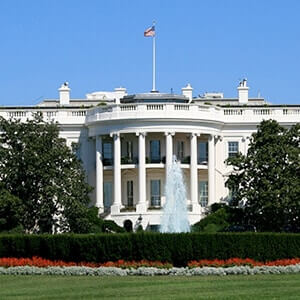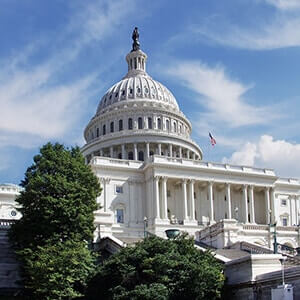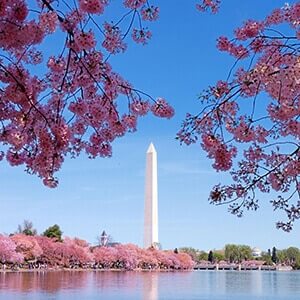Moving to Washington DC
Washington DC is not only the seat of government and capital of the US, it is also a city that is constantly growing and attracting a collection of young, educated people from all over the globe. The city has a rich history, good food and upmarket neighbourhoods where everyone wishes to live.
If you’re considering a move to Washington DC, you will want to know everything about moving and living there. We’ve put together the ultimate international relocation guide to provide further information on moving to Washington DC, USA.
Orientation
Washington, District of Columbia, is located on the East Coast of the USA. Previously measuring 295 sq.km, the region has shrunk to 111 sq.km ever since land was returned to Virginia in the 1840s. Washington DC is divided into four distinct sections; Northwest, Southwest, Northeast and Southeast. The lines delineating these sections emanate from the Capitol, which is the hub of the imaginary wheel.
Washington DC falls under Eastern Standard Time (EST), which is the equivalent to Greenwich Mean Time (GMT) minus 5 hours. Daylight Saving Time (DST) is observed in Washington from the second Sunday in March to the first Sunday in November.
The population of Washington DC is approximately 681,000, and in general, the residents there are highly educated and health-conscious. The population shifts greatly with diplomatic personnel, government employees and various other groups.
The capital has a mild climate all year round, with hot summers that are very humid, and can even cause issues for people with health issues. If you wish to see the current air quality forecast you can view it here.
Public Transport
Washington DC has a number of useful transport links which enable visitors and residents to get around the city. One of the most commonly used methods of public transport is the Washington Metro, which serves Washington and several Virginia suburbs. The system is used by people of all walks of life, and is well known for its efficiency, safety and cleanliness. Each train in the Washington Metro is colour coded. The service runs as follows:
- The red line runs from Glenmont to Shady Grove.
- The orange line runs from New Carrollton to Vienna.
- The blue line runs from Largo Town Center to Franconia-Springfield.
- The green line runs from Branch Avenue to Greenbelt.
- The yellow line runs from Huntington to Fort Totten (with extended rush-hour only service to Franconia-Springfield/Greenbelt).
- The silver line runs from Largo Town Center to Rosslyn along the blue line route, then continues on to Reston, VA via Tyson’s Corner.
There are also buses available for the areas which are not covered by the Washington Metro.
As the capital of America, Washington DC is served by three major airports, including Reagan National, Dulles International and Baltimore Washington International Airport. Getting to and from the airport is simple, with taxis in abundance. Rideshare and transportation networks services are also available, but only operate from certain areas in the city.

Driving in Washington DC
When living in Washington DC, having a vehicle is not absolutely necessary. With an excellent public transportation service and rental cars available on a long and short term basis, it is not essential to have your own vehicle if you’re based in the city centre. However, if you live in the suburbs of Washington DC, a car will make things a great deal easier. There are some great shopping areas and parks located nearby to Washington that would be much better accessed by car. Despite this, it is important to bear in mind that parking can be costly.
If you are planning on driving in Washington DC, you will need to acquire a local licence within a given amount of days. On average, this is within 30 days of becoming a resident.
The Expatriate Community
Washington DC has a strong international community, mostly due to the large number of embassies and international businesses located in the area. Washington constantly plays host to a mass of international visitors from all over the globe, with various nationalities having several communities there.
Despite the growth of ethnic groups in the city, most are settled in areas according to their level of income as opposed to ethnicity. As a result of this, there are no specific ethnic neighbourhoods in DC.
When searching for a neighbourhood to reside in, it’s always best to consider joining local community groups or networking sites to learn more about the residents and the general area.

Understanding the people of Washington DC
You cannot describe the general characteristics of the residents in Washington DC, due to the transient nature of the population. You will however realise that there are far fewer natives of Washington DC than people born in other areas of the United States and other countries. Some traits can be loosely applied to residents of the different metro areas, however. For example, Virginians are typically more conservative, and the residents of DC proper tend to be younger and living a faster-paced lifestyle.
Those living in DC tend to have a high level of education, and are in fact some of the best-educated people in America according to a number of studies. The area also has one of the highest percentages of working women.
Housing in Washington DC
Similar to many other states in the US, the most effective way to locate housing is through a real estate agent. In Washington DC, there is a multiple listing service (known as MLS), which lists all of the available properties for sale and rent.
If you’re looking to rent a home in Washington DC, you may have to seek out an agency. Outgoing tenants of rentals are expected to leave the property in the same initial condition, with the apartment professionally cleaned.
There are also a number of options for those seeking short-term housing. See below for further details:
Corporate housing – There are a number of excellent corporate housing options available in the area. This can range from national providers all the way to family-owned properties.
Private homes – A number of private homes are available to rent, with a typical lease lasting one year.
Hotels – Some hotels can provide longer-term stays for those looking to stay in the area.
Schooling in Washington DC
As mentioned, Washington DC has one of the most educated populations in the country. Expatriates in the city tend to send their children to private schools, especially if living within Washington DC proper. However, there are also some excellent public school systems in the suburbs, which are also a good choice for expats.
Both public and private schools in Washington have bilingual class structures, and whilst International schools do exist in the area, they offer much more varied language programmes.
The metro area of Washington is very multicultural, and therefore more languages are spoken in public schools than in any other area of the US. This is largely due to the many Asian languages spoken there.
International Schools
There are a wide range of international schools in Washington to choose from, where bilingual classes are offered as part of the curriculum. A few examples include:
- The British School
- German School in Potomac, Maryland
- Rochambeau French International School
It is not uncommon for parents to join carpool groups to take their child to and from school. Depending on where you live and which school your child attends, buses aren’t always an option, so opting for carpool is much more reliable.
Preschools
For many parents, preschool is important, as this will enable your child to be level with other children entering kindergarten. This guide from Washington Family outlines preschool information that you may find useful.

Moving to Washington DC Checklist
If you are thinking of moving to Washington DC then there are some things you should consider before the move and make sure you have sorted each step out. We have put together a checklist that will help when planning your move;
- Visa Application – make sure that your visa has been approved before moving and you know the full terms of your visa and how long you can stay. Unless you obtain a Green Card, you will likely have to continue applying for a visa if you wish to live in the USA long term.
- Consider Healthcare – if your employer doesn’t have a healthcare plan then you will need to source your own healthcare. This is important as there is no public healthcare like the UK or other European nations.
- Review Neighbourhoods – you shouldn’t just assume that you will be living in the city centre, look at surrounding areas and wards of Washington DC like Georgetown, Columbia Heights and Adams Morgan.
- Removals Company – make sure that you have discussed everything you need with a removals company that can help you relocate to the United States. They will often bring up things you haven’t considered too.
- Sort Utilities – make sure you have sorted all of our utilities before moving so that you have Gas, Electricity and Water when you arrive in the US. Pepco and Novec are two of the largest energy suppliers in Washington DC.
Find out everything you need to know about moving to Washington DC. Learn about moving to the USA from the UK. Make sure to get in touch with a member of the team to get a free quote using our online form system.
Interested in information on another country? Take a look at our other International Relocation guides.
Great customer Experiences start here
Very pleasent and helpful. Nothing too much trouble.
Mr M H moved from London, UK to Toronto, Canada
Very helpful and patient even when things got packed that we had to get out again!
Mr M E moved from Enfield, UK to Dorset, UK
Thanks to Graham, Nick and the entire crew!
Mr C D M moved from UK to Singapore
Friendly and helpful crew.
Ms T W moved from USA to Cambridgeshire, UK
